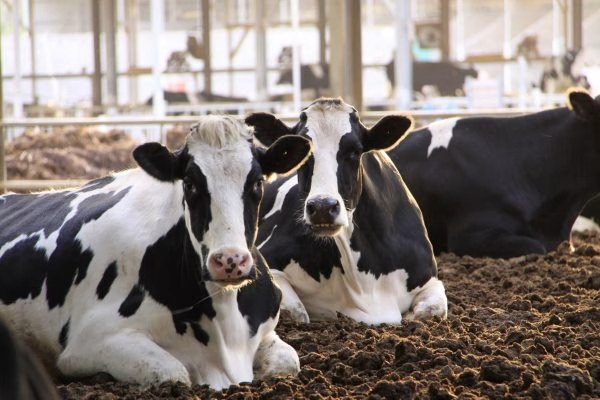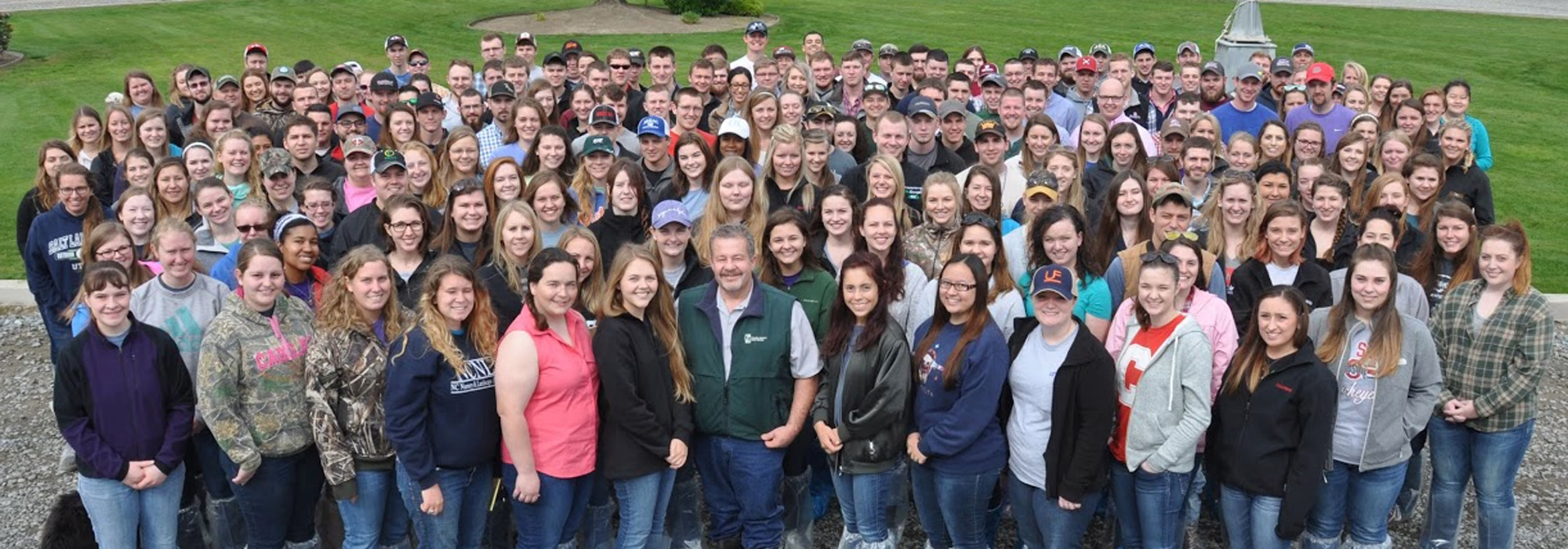Revolutionize your 5000-head dairy farm with cutting-edge tech and time-tested wisdom. Discover how robotic milking, AI health monitoring, and precision feeding can boost production by 30% and slash costs. Ready to transform your operation into a model of efficiency and sustainability? Dive in to stay ahead in modern dairy farming.
Revolutionize your 5000-head dairy farm with cutting-edge tech and time-tested wisdom. Discover how robotic milking, AI health monitoring, and precision feeding can boost production by 30% and slash costs. Ready to transform your operation into a model of efficiency and sustainability? Dive in to stay ahead in modern dairy farming.
The evolution of modern dairy farm management has significantly transformed recently. With large-scale operations becoming increasingly prevalent, a 5,000-cow farm often represents the pinnacle of modern agricultural enterprise, demanding sophisticated management techniques and state-of-the-art technology.
Key Statistics:
- Cows produce 30% more milk today than 50 years ago
- Farms using new technology can increase milk production by up to 30%
- Robotic milking systems can increase milk yield per cow by 28.5%
- IoT and AI can reduce feed waste by up to 75%
- Smart feeding systems can improve feed efficiency by 10-15%
- Large-scale farms can reduce cost per ton of milk by up to 66% compared to smaller farms
What are the critical components of successfully managing such a large-scale operation? Let’s break it down.
Leveraging Technology for Precision Dairy Farming
| Aspect | Traditional Method | Modern Technology Solution |
|---|---|---|
| Milking | Manual milking or basic automated systems | Robotic milking systems (AMS) |
| Health Monitoring | Visual observation and periodic check-ups | Wearable sensors and AI-powered health prediction |
| Feeding | Fixed rations for groups of cows | Precision feeding based on individual cow needs |
| Breeding | Essential record-keeping and visual heat detection | Genomic testing and AI-assisted breeding programs |
| Data Management | Manual record-keeping | IoT sensors and cloud-based data analytics |
Precision is paramount in large-scale dairy operations. The integration of Internet of Things (IoT) devices, Artificial Intelligence (AI), and data analytics has revolutionized herd management and milk production optimization.
Automated Milking Systems: The Heart of Modern Dairy
Robotic milking systems, or Automatic Milking Systems (AMS), have emerged as game-changers in dairy farm management. These systems allow cows to be milked on their schedule, often increasing milking frequency to 3-4 times daily. The result is a significant boost in milk yield and overall farm efficiency.
Case Study: A dairy farm in Wisconsin saw its annual milk production per cow rise from 7,000 liters to an impressive 9,000 liters after adopting robotic milking systems – a 28.5% increase in productivity.
IoT and AI: The New Farm Hands
Modern large-scale dairy farms are embracing IoT sensors and AI-powered analytics to monitor everything from cow health to feed levels in real time. These technologies enable:
- Early detection of health issues through continuous monitoring
- Optimization of feeding schedules based on individual cow needs
- Accurate prediction of calving times for improved reproductive management
- Real-time monitoring of milk quality parameters
Did You Know? AI-powered systems can now detect subtle changes in cow behavior and physiology, predicting health issues up to 48 hours before visible symptoms appear.
Herd Management at Scale: Balancing Efficiency and Animal Welfare
Managing 5000 cows requires a delicate balance between operational efficiency and ensuring the health and well-being of each animal.
Health Monitoring and Preventive Care
Large-scale dairy operations implement advanced health monitoring systems to maintain optimal herd health. These include:
- Wearable sensors tracking individual cow activity, rumination, and body temperature
- Automated systems for early detection of mastitis, lameness, and metabolic disorders
- Precision feeding programs based on individual cow nutritional requirements and production stage
Expert Insight: “Daily insights into cow health are invaluable. Our integrated computer system and rumination collars allow us to swiftly detect potential infections or metabolic issues, often before they become clinical problems,” says Dr. Paul Johnson, a veterinarian specializing in large-scale dairy operations.
Breeding and Genetics: The Foundation of a Productive Herd
In a 5000-cow operation, strategic breeding and genetic selection are crucial for maintaining high productivity. Modern farms are utilizing:
- Genomic testing for selecting superior genetics and breeding more efficient cows
- Sexed semen technology for targeted gender selection in offspring
- Embryo transfer technologies for rapid genetic improvement and herd expansion
Sustainable Practices in Large-Scale Dairy Farming
| Sustainable Practice | Environmental Benefit | Potential Impact |
|---|---|---|
| Anaerobic Digesters | Reduced Methane Emissions | Up to 85% Reduction in Greenhouse Gas Emissions |
| Water Recycling | Water Conservation | 50-90% Reduction in Freshwater Use |
| Precision Feeding | Reduced Nutrient Waste | 20-30% Reduction in Nitrogen and Phosphorus Excretion |
| Solar Energy Use | Reduced Carbon Footprint | Up to 40% Reduction in Farm Energy Costs |
| Cover Cropping | Improved Soil Health | 30-50% Reduction in Soil Erosion |
Sustainability is no longer optional – it’s a necessity for the long-term viability of large dairy operations. Here’s how 5000-head farms are leading the charge:
Waste Management and Energy Production
Innovative farms are turning waste into opportunity:
- Large-scale anaerobic digesters for biogas production from manure
- Nutrient recovery systems for producing high-quality fertilizers
- Water recycling and conservation measures, including advanced filtration systems
Precision Feed Management
Feed efficiency is critical in large operations. Advanced farms are using:
- Automated feed pushers ensuring consistent feed availability 24/7
- Near-infrared spectroscopy (NIRS) technology for real-time feed quality analysis
- Crop management software for optimizing feed production and reducing environmental impact
Sustainable Practices in Large-Scale Dairy Farming
Sustainability is no longer optional – it’s a necessity for the long-term viability of large dairy operations. Here’s how 5000-head farms are leading the charge:
Waste Management and Energy Production
Innovative farms are turning waste into opportunity:
- Large-scale anaerobic digesters for biogas production from manure
- Nutrient recovery systems for producing high-quality fertilizers
- Water recycling and conservation measures, including advanced filtration systems
Precision Feed Management
Feed efficiency is critical in large operations. Advanced farms are using:
- Automated feed pushers ensuring consistent feed availability 24/7
- Near-infrared spectroscopy (NIRS) technology for real-time feed quality analysis
- Crop management software for optimizing feed production and reducing environmental impact
Quick Facts:
- Automated feed pushers can reduce feed waste by up to 75% compared to traditional methods
- Precision feeding systems can improve feed efficiency by 10-15%, significantly reducing costs
- Advanced crop management software can increase yield by 5-10% while reducing input costs and environmental impact
The Human Element: Managing People in a High-Tech Environment
Even with advanced automation, people remain the backbone of successful large-scale dairy operations. Here’s how top farms are managing their human resources:
- Implementing clear organizational structures with defined roles and responsibilities
- Providing ongoing training and development programs to keep staff up-to-date with new technologies
- Focusing on worker safety and well-being through ergonomic equipment and stress management programs
- Utilizing data-driven performance metrics to incentivize and reward productivity
Question to Consider: How can large dairy operations balance the need for automation with maintaining a skilled and engaged workforce in an increasingly tech-driven environment?
Financial Management: Navigating the Economics of Scale
Running a 5000-head dairy farm requires astute financial management. Key strategies include:
- Implementing detailed budgeting and cost control measures using advanced financial software
- Conducting regular financial analysis and performance tracking against industry benchmarks
- Developing strategic plans for capital investments and expansion based on market trends and farm data
- Employing risk management strategies through diversification and financial hedging instruments
Table: Economic Impact of Scale in Dairy Farming
| Herd Size | Cost per Ton of Milk | Labor Efficiency (Cows/Worker) |
|---|---|---|
| < 50 | $X | 25-30 |
| 500 | $X/2 | 80-100 |
| 5000 | $X/3 | 150-200 |
The Future of Large-Scale Dairy: Trends and Predictions
As we look to the future, several trends are shaping the landscape of large-scale dairy farming:
- Increased adoption of robotics and automation across all farm operations
- Growing emphasis on sustainability and environmental stewardship
- Rising importance of data-driven decision-making and predictive analytics
- Expansion of value-added product lines to meet changing consumer demands
- Greater focus on animal welfare and consumer transparency through blockchain and IoT technologies
Question to Ponder: How will these trends reshape the competitive landscape for large-scale dairy operations in the next decade, and what new skills will farm managers need to develop?
Key Takeaways:
- Embrace cutting-edge technologies like IoT and AI to enhance farm precision and boost milk production.
- Automated milking systems increase milking frequency and improve overall herd management.
- Utilize AI for proactive health monitoring, ensuring early detection and treatment of cow health issues.
- Sustainable waste management practices transform waste into energy and resources, enhancing farm efficiency.
- Precision feeding optimizes nutrition, reduces waste, and improves cow productivity and health.
- Effective workforce management and continuous training are crucial for operating a large-scale, high-tech farm.
- Sound financial management involves detailed budgeting, regular financial reviews, and strategic spending.
- Stay ahead by integrating industrial trends like automation, sustainability, and data-driven decision-making.
The Bottom Line
Running a 5000-head dairy farm demands a sophisticated blend of traditional knowledge and cutting-edge technology. As we explore the strategies to revolutionize your operation, remember that success in this evolving industry hinges on embracing innovation, prioritizing sustainability, and focusing relentlessly on efficiency and animal welfare. Whether considering robotic milking, AI-powered health monitoring, or optimized feed management, every technological upgrade can lead to significant gains. Don’t just wait for the future of dairy farming – shape it. By taking action today, you can transform your farm into a model of modern dairy excellence, staying ahead in an increasingly competitive market. Are you ready to take that first step towards a more efficient, sustainable, and profitable dairy operation?
Summary:
This article explores how you can manage a sizeable 5000-cow dairy farm by using both old farming skills and new technologies. Key technologies like robotic milking systems can boost milk production by nearly 30%, while tools like AI help keep animals healthy and cut feed waste. Large farms can cut milk costs by two-thirds compared to smaller ones. Using things like IoT sensors helps track cow health and feed efficiently. Sustainability is also a focus, with practices like gene testing to keep cows healthy. Good management of workers and finances is also critical to keeping big farms running well. The article encourages farmers to try new tech to make their farms more efficient and planet-friendly.
Learn more:
- Why 80% of U.S. Dairy Farms Are Struggling: An Insider’s Look at the Unseen Challenges
- From Farmer to Entrepreneur: Capturing the Modern Dairy Farm Owner’s Attention
- Why Expanding Your Dairy Farm Could Be a Nightmare: Here’s What You Need to Know
 Join the Revolution!
Join the Revolution!
Bullvine Daily is your essential e-zine for staying ahead in the dairy industry. With over 30,000 subscribers, we bring you the week’s top news, helping you manage tasks efficiently. Stay informed about milk production, tech adoption, and more, so you can concentrate on your dairy operations.







 Join the Revolution!
Join the Revolution!
 Download our Dairy Farmers Guide to Stress-Free Calvings
Download our Dairy Farmers Guide to Stress-Free Calvings










